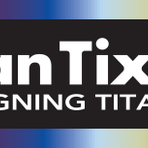Tariff Tango: Markets React to Trump's Delay on EU Levies
May 28, 2025, 10:11 pm

Location: United States, Pennsylvania, Pittsburgh
Employees: 10001+
Founded date: 1901
Total raised: $240M
In the world of finance, news travels fast. The recent announcement from President Trump to delay a hefty 50% tariff on European Union imports sent ripples through the stock market. On May 26, 2025, the Dow Jones Industrial Average surged by 642 points, a clear sign that investors welcomed the news. The S&P 500 and Nasdaq Composite followed suit, rising 1.8% and 2.1%, respectively. This was a stark contrast to the previous week, where all three major indexes had taken a hit, sliding over 2% due to the looming tariff threats.
The tariff delay, pushed back to July 9, was a response to a request from Ursula von der Leyen, the president of the European Commission. This move came after Trump had initially threatened to impose the tariffs starting June 1. It’s a classic case of political maneuvering, where one side takes a step back to avoid a full-blown trade war. The markets reacted positively, as if a weight had been lifted.
Consumer confidence data released on the same day added fuel to the fire. The Conference Board reported a significant increase, with the index jumping to 98, up more than 12 points from the previous month. This surge in consumer sentiment reflects a glimmer of hope for trade agreements and economic stability. Investors are like sailors, navigating through turbulent waters, and this news provided a much-needed wind in their sails.
However, caution remains. Analysts warn that while the immediate outlook appears bright, underlying risks persist. Adam Crisafulli from Vital Knowledge pointed out that despite the positive market reaction, there’s a lingering sense of complacency. The potential for future tariff threats and the broader implications of fiscal policy loom large. It’s a game of chess, where each move can lead to unexpected consequences.
In the tech sector, Tesla’s shares climbed 5% after CEO Elon Musk announced a shift in focus back to his companies, away from the political arena. This news was like a spark in a dry field, igniting investor enthusiasm. Other tech giants, including Nvidia, AMD, Apple, and Microsoft, also saw gains, showcasing the sector's resilience amid uncertainty.
Meanwhile, U.S. Steel shares rose over 2% following reports that Japan’s Nippon Steel is set to finalize its acquisition of the American company for $55 per share. This deal, initially blocked in January, has now been cleared by Trump, who referred to it as a “partnership.” The announcement promises to inject $14 billion into the U.S. economy and create thousands of jobs. It’s a classic win-win scenario, where both companies stand to gain.
Yet, not all news was rosy. Trump Media’s shares plummeted by 10% after the company announced plans to raise $2.5 billion to invest in Bitcoin. The market’s reaction was swift, highlighting the volatility that surrounds cryptocurrency investments. It’s a reminder that while some sectors thrive, others can falter dramatically.
Small-cap stocks also joined the rally, with the Russell 2000 index climbing 1.7%. This uptick indicates a broader market recovery, as investors look beyond the giants and explore opportunities in smaller companies. It’s akin to a garden where diverse plants can flourish, each contributing to the overall ecosystem.
As the week progresses, traders are keeping a close eye on upcoming earnings reports from companies like Okta, Nvidia, Macy’s, and Costco. With over 95% of S&P 500 companies having reported their earnings, the focus will shift to how these firms navigate the changing economic landscape. The earnings season is like a revealing curtain, offering insights into the health of various sectors.
However, the backdrop of rising Treasury yields and concerns over national debt continues to cast a shadow. Analysts warn that Trump’s proposed tax cuts and spending reductions could exacerbate the national deficit, creating a precarious situation for the economy. It’s a balancing act, where policymakers must tread carefully to avoid tipping the scales.
In Asia, markets reacted mixedly to the tariff delay. While Japan’s Nikkei 225 rose, South Korea’s Kospi index fell. This divergence reflects the global interconnectedness of markets, where news from one region can influence another. Investors are like tightrope walkers, carefully assessing their next steps in a volatile environment.
Looking ahead, the release of the Federal Reserve’s minutes from its recent policy meeting will be closely scrutinized. Investors are eager to gauge the central bank’s stance on the economy amid ongoing trade tensions. The Fed’s dual mandate of controlling inflation while supporting economic growth presents a complex challenge, akin to walking a tightrope.
In conclusion, the recent delay of tariffs on the EU has provided a temporary reprieve for the markets. The surge in consumer confidence and positive reactions from various sectors indicate a moment of optimism. However, the road ahead remains fraught with uncertainty. Investors must remain vigilant, ready to adapt to the ever-changing landscape of global trade and economic policy. In this game of market chess, every move counts, and the stakes are high.
The tariff delay, pushed back to July 9, was a response to a request from Ursula von der Leyen, the president of the European Commission. This move came after Trump had initially threatened to impose the tariffs starting June 1. It’s a classic case of political maneuvering, where one side takes a step back to avoid a full-blown trade war. The markets reacted positively, as if a weight had been lifted.
Consumer confidence data released on the same day added fuel to the fire. The Conference Board reported a significant increase, with the index jumping to 98, up more than 12 points from the previous month. This surge in consumer sentiment reflects a glimmer of hope for trade agreements and economic stability. Investors are like sailors, navigating through turbulent waters, and this news provided a much-needed wind in their sails.
However, caution remains. Analysts warn that while the immediate outlook appears bright, underlying risks persist. Adam Crisafulli from Vital Knowledge pointed out that despite the positive market reaction, there’s a lingering sense of complacency. The potential for future tariff threats and the broader implications of fiscal policy loom large. It’s a game of chess, where each move can lead to unexpected consequences.
In the tech sector, Tesla’s shares climbed 5% after CEO Elon Musk announced a shift in focus back to his companies, away from the political arena. This news was like a spark in a dry field, igniting investor enthusiasm. Other tech giants, including Nvidia, AMD, Apple, and Microsoft, also saw gains, showcasing the sector's resilience amid uncertainty.
Meanwhile, U.S. Steel shares rose over 2% following reports that Japan’s Nippon Steel is set to finalize its acquisition of the American company for $55 per share. This deal, initially blocked in January, has now been cleared by Trump, who referred to it as a “partnership.” The announcement promises to inject $14 billion into the U.S. economy and create thousands of jobs. It’s a classic win-win scenario, where both companies stand to gain.
Yet, not all news was rosy. Trump Media’s shares plummeted by 10% after the company announced plans to raise $2.5 billion to invest in Bitcoin. The market’s reaction was swift, highlighting the volatility that surrounds cryptocurrency investments. It’s a reminder that while some sectors thrive, others can falter dramatically.
Small-cap stocks also joined the rally, with the Russell 2000 index climbing 1.7%. This uptick indicates a broader market recovery, as investors look beyond the giants and explore opportunities in smaller companies. It’s akin to a garden where diverse plants can flourish, each contributing to the overall ecosystem.
As the week progresses, traders are keeping a close eye on upcoming earnings reports from companies like Okta, Nvidia, Macy’s, and Costco. With over 95% of S&P 500 companies having reported their earnings, the focus will shift to how these firms navigate the changing economic landscape. The earnings season is like a revealing curtain, offering insights into the health of various sectors.
However, the backdrop of rising Treasury yields and concerns over national debt continues to cast a shadow. Analysts warn that Trump’s proposed tax cuts and spending reductions could exacerbate the national deficit, creating a precarious situation for the economy. It’s a balancing act, where policymakers must tread carefully to avoid tipping the scales.
In Asia, markets reacted mixedly to the tariff delay. While Japan’s Nikkei 225 rose, South Korea’s Kospi index fell. This divergence reflects the global interconnectedness of markets, where news from one region can influence another. Investors are like tightrope walkers, carefully assessing their next steps in a volatile environment.
Looking ahead, the release of the Federal Reserve’s minutes from its recent policy meeting will be closely scrutinized. Investors are eager to gauge the central bank’s stance on the economy amid ongoing trade tensions. The Fed’s dual mandate of controlling inflation while supporting economic growth presents a complex challenge, akin to walking a tightrope.
In conclusion, the recent delay of tariffs on the EU has provided a temporary reprieve for the markets. The surge in consumer confidence and positive reactions from various sectors indicate a moment of optimism. However, the road ahead remains fraught with uncertainty. Investors must remain vigilant, ready to adapt to the ever-changing landscape of global trade and economic policy. In this game of market chess, every move counts, and the stakes are high.
